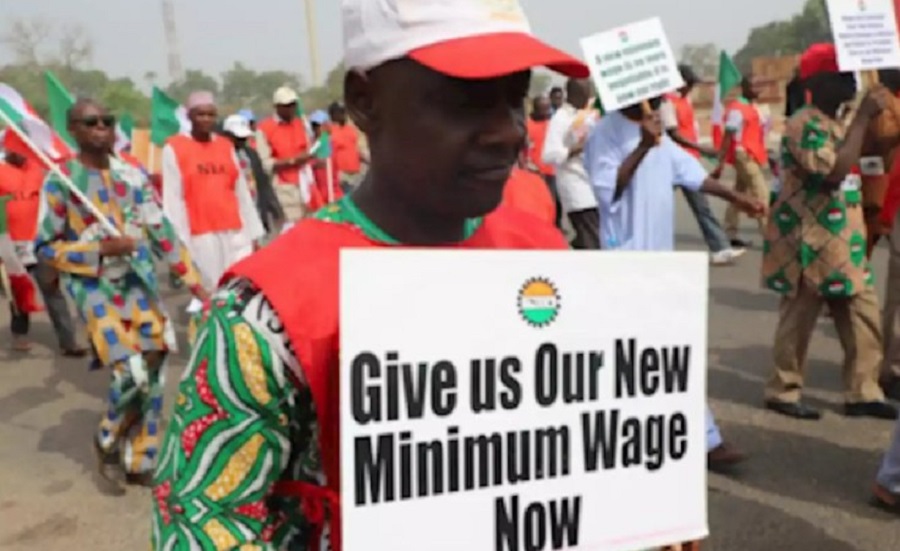“State Governments not paying are breaching the law of the land. This minimum wage is different from CVA (Collective Bargaining agreement); this is a national decree that says what you will pay to the lowest-paid employee in your establishment.”
Those were the words of Labour Minister, Chris Ngige on Sunday, as he warned state governments and private firms that a failure to meet the minimum wage compliance would be met with legal consequences.
Since Nigeria adopted the minimum wage of N30,000 ($73.2 at NAFEX rate of $1=N410), compliance has been difficult and many state governments have admitted to being unable to pay the set wage.
The Federal Government has implemented policies to improve the minimum wage budget including exempting minimum wage earners from paying personal income tax, in order to stimulate the economy and improve the standard of living of this group of workers.
READ: Naira falls at NAFEX window despite 394% increase in dollar supply
The FG also recently announced that consequential adjustment of the new pension payment would commence from the May 2021 payroll, with the arrears taking effect from April 2019, in a bid to adjust pension benefits occasioned by the 2019 new minimum wage.
Nigeria’s minimum wage lags behind its global peers, thanks to economic factors related to earning. The MINT nations, which Nigeria is part of, is made up of developing economies with proper formal diversified economic sectors, which have made minimum wage implementation less of a hassle as wages have grown significantly over the last 20 years compared to Nigeria.
MINT nations
The name was coined in 2013 by economist Jim O’Neill, the same person who popularized the term “BRICs.”
“Mexico, Indonesia, Nigeria and Turkey all have very favourable demographics for at least the next 20 years, and their economic prospects are interesting,” O’ Neill said.
The countries selected on the MINT list were measured on multiple factors including, economic growth, age demographics, geography, internet adoption, and many more.
READ: Has the Naira been devalued?
The minimum wage in MINT nations
Mexico
With a GDP per capita of $9,946 in 2019, the Mexican National Minimum Wage Commission recently announced its decision to increase the general minimum daily wage to 141.70 Mexican pesos (approximately US$7.10) in 2021, which at a rate of 30 days a month, is 2.7 times larger than Nigeria’s minimum wage using official CBN rates.
Indonesia
With a GDP per capita of $4,130 in 2019, Indonesia’s per capita income has grown over 5 times in the past 20 years. Of Indonesia’s 34 provinces, only five decided to increase the minimum wage for 2021, with the Jakarta region having a minimum wage of $312 a month, which is nearly 4 times Nigeria’s minimum wage.
READ: Rising Wages and Low Productivity: The Need for a Justified Minimum Wage Agreement
Turkey
A founding member of the OECD and NATO, and also a member of the EU-Turkey Customs Union, Turkey had a GDP per capita of $9126 in 2019, growing nearly 3 times in 20 years. The Turkish Government raised its minimum wage by 21.56% as of January 1, 2021, to $377 a month for single people, which is nearly 5 times Nigeria’s minimum monthly wage.
Differences between MINT and Nigerian wages
The MINT nations were all included in the list for their growth capacity for the next 20 years; however, Nigeria seems to have regressed with gains it made when the list was made. While other members of the club have grown earnings by 3 to 5 times over in the past 20 years, Nigeria’s GDP per capita is the same level it was 40 years ago.
Tim Callen, Assistant Director in the IMF’s External Relations Department, said in a 2020 report that “an increase in real GDP is interpreted as a sign that the economy is doing well. When real GDP is growing strongly, employment is likely to be increasing as companies hire more workers for their factories and people have more money in their pockets.”
However, Nigeria may not catch up to its MINT buddies anytime soon, as the IMF forecasts that Nigeria’s real GDP growth in 2021 is expected to turn positive at 1.5%, while real GDP is expected to recover to its pre-pandemic level only in 2022.
“An appropriately valued exchange rate and a clear exchange rate policy would also help instil confidence and private sector-led recovery. Policy clarity is also important to attract larger capital inflows, including foreign direct investments, which have dropped significantly in recent years and successful diversification,” IMF urged the FG.
